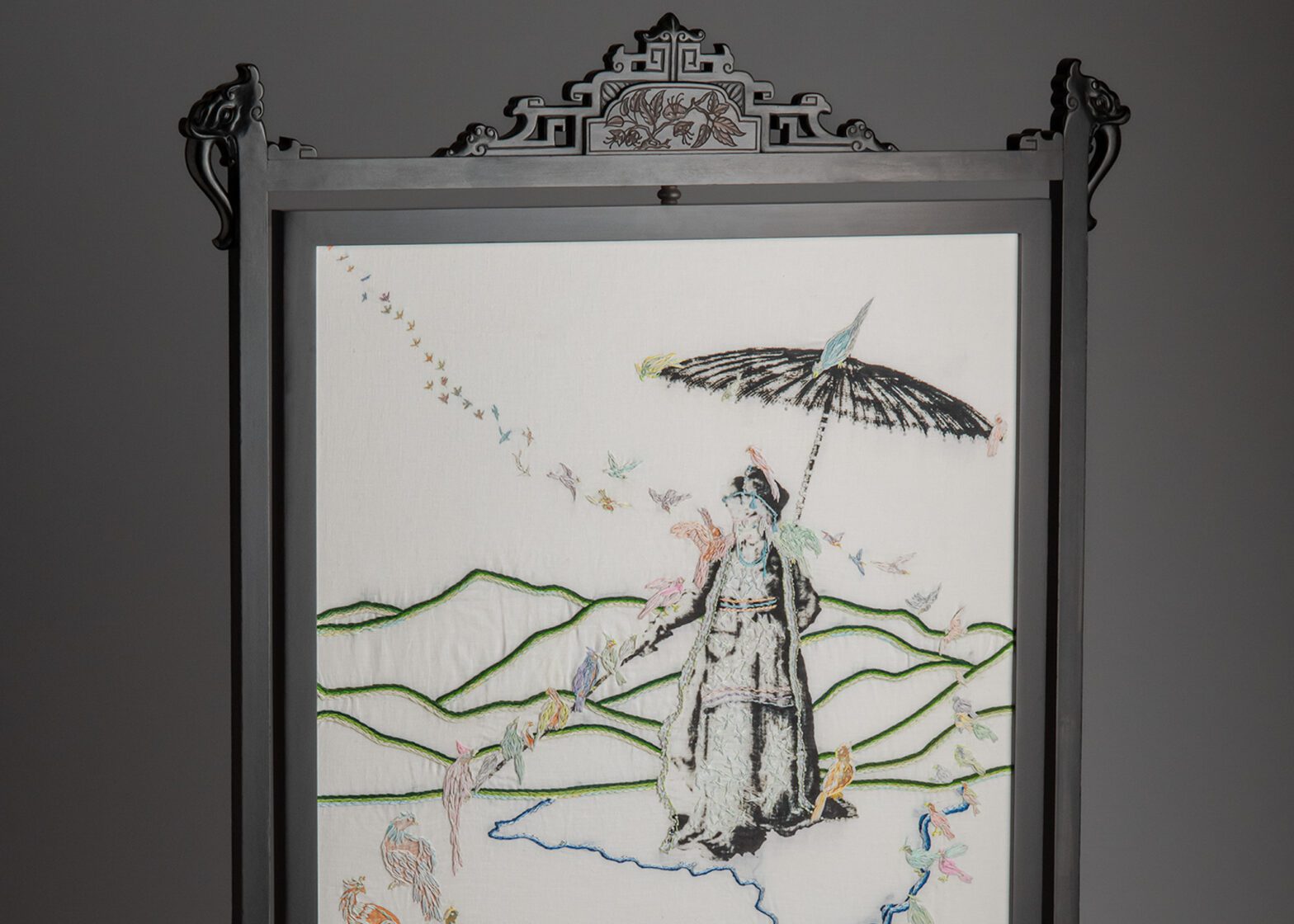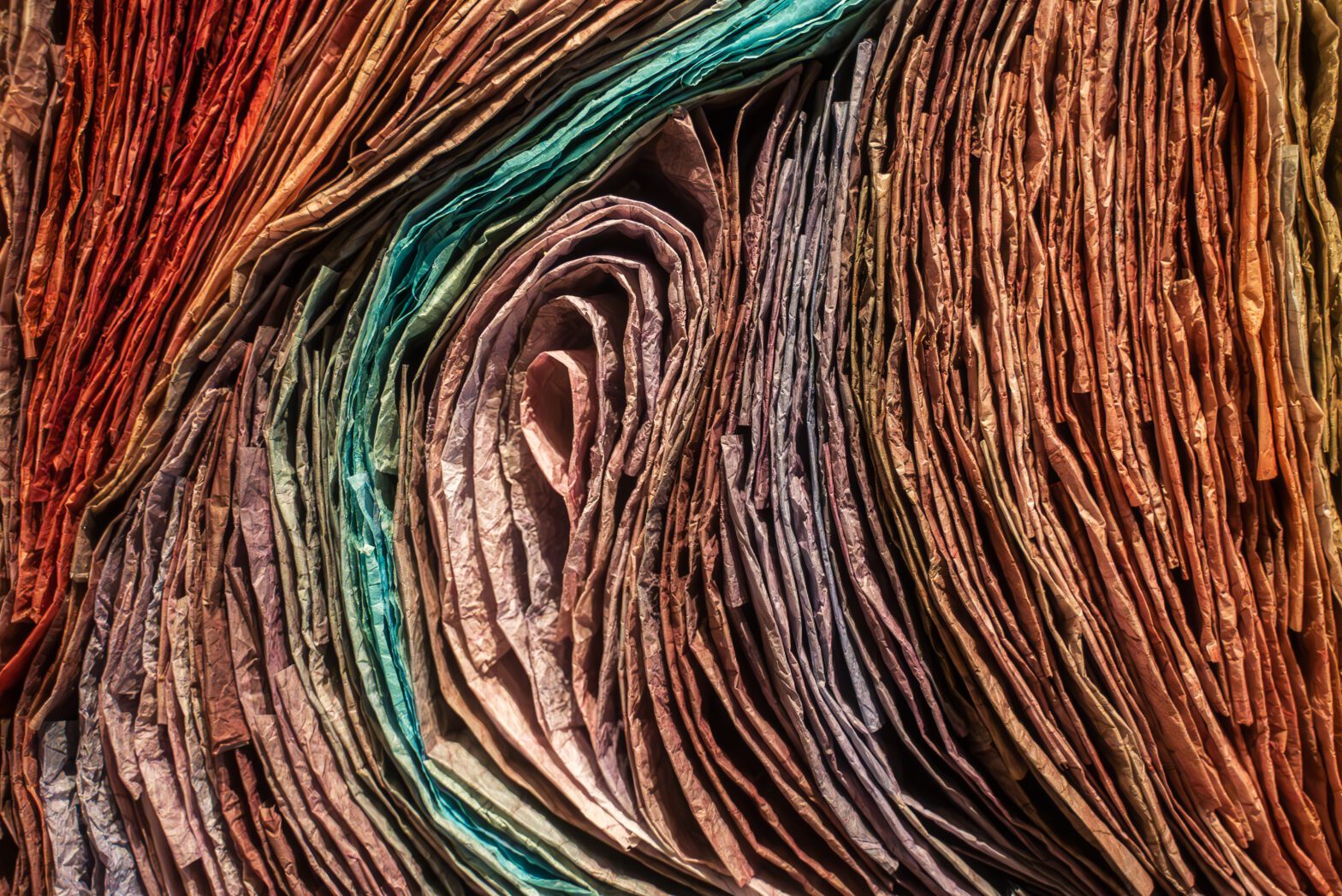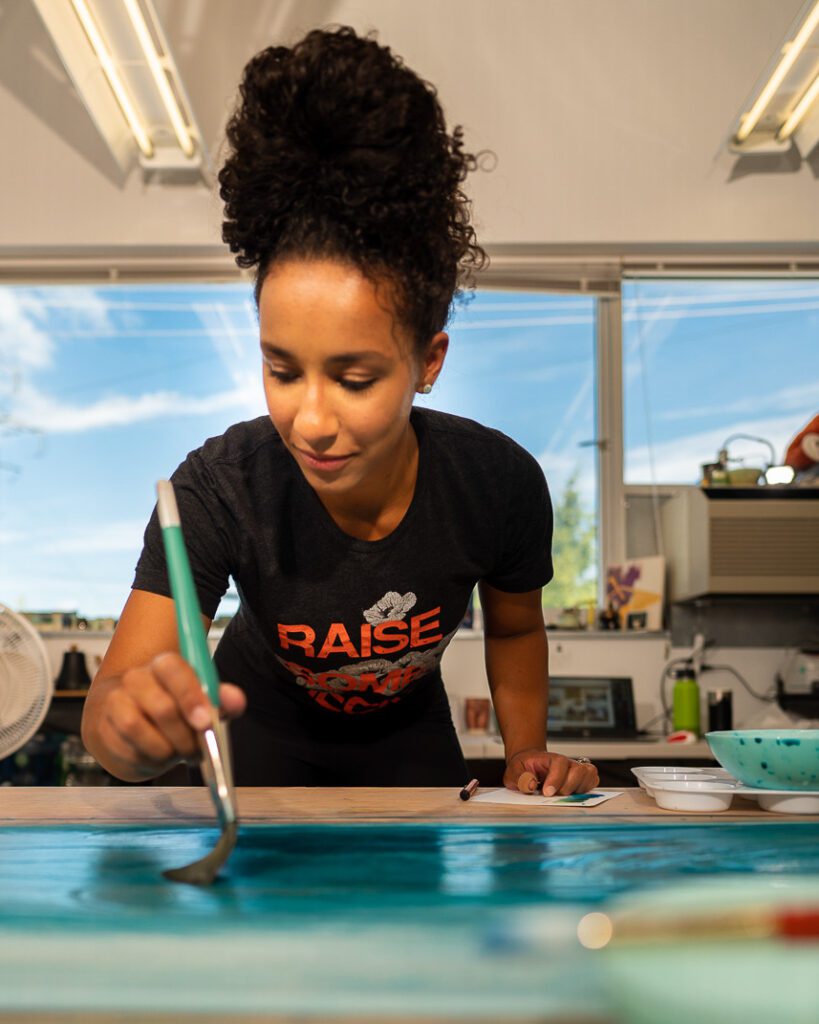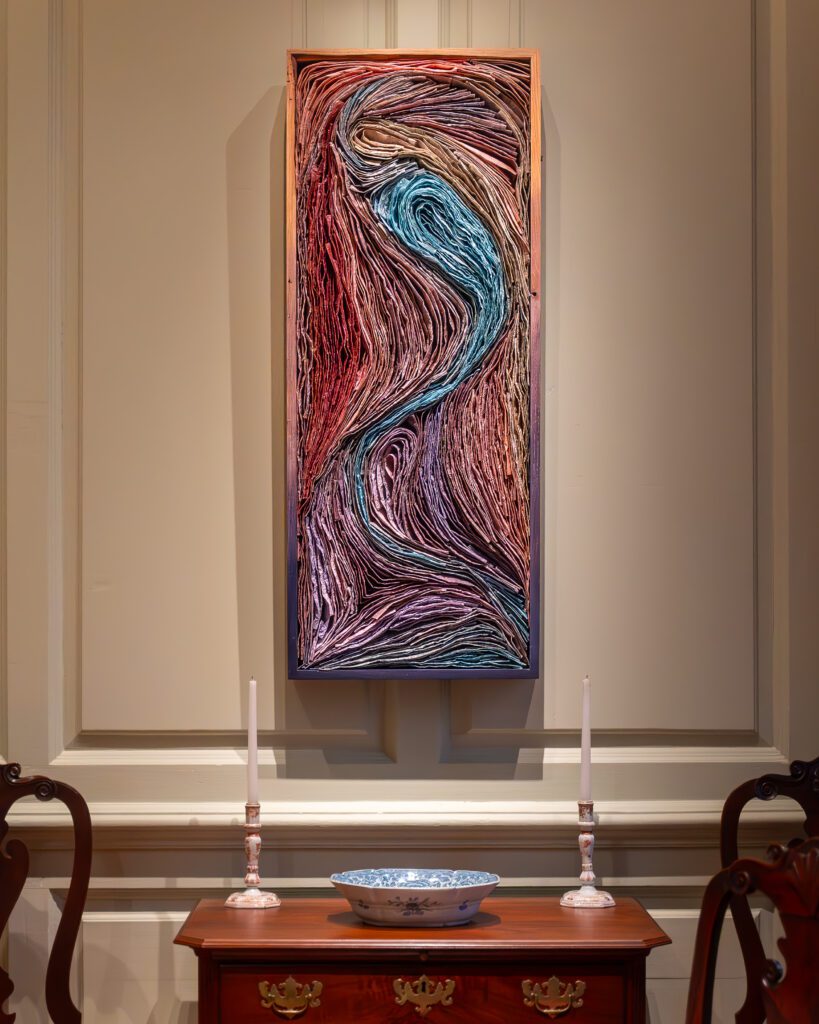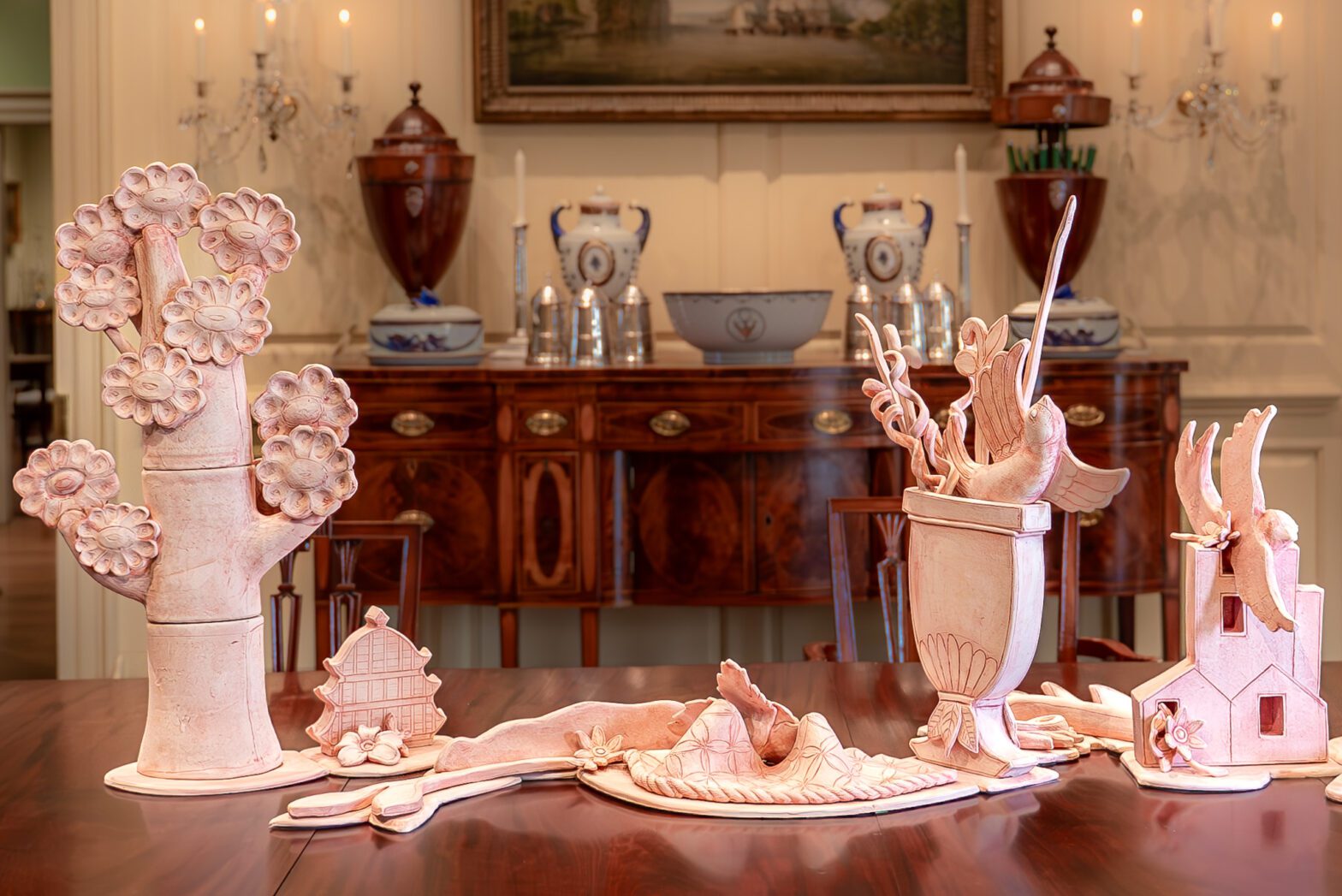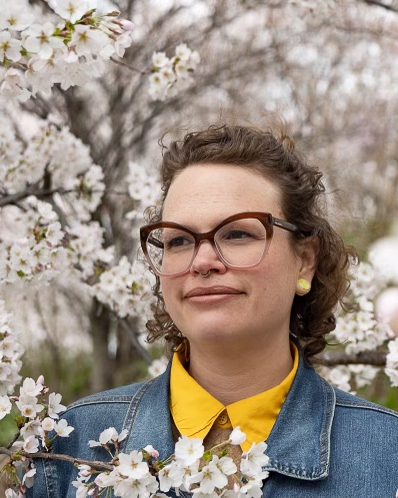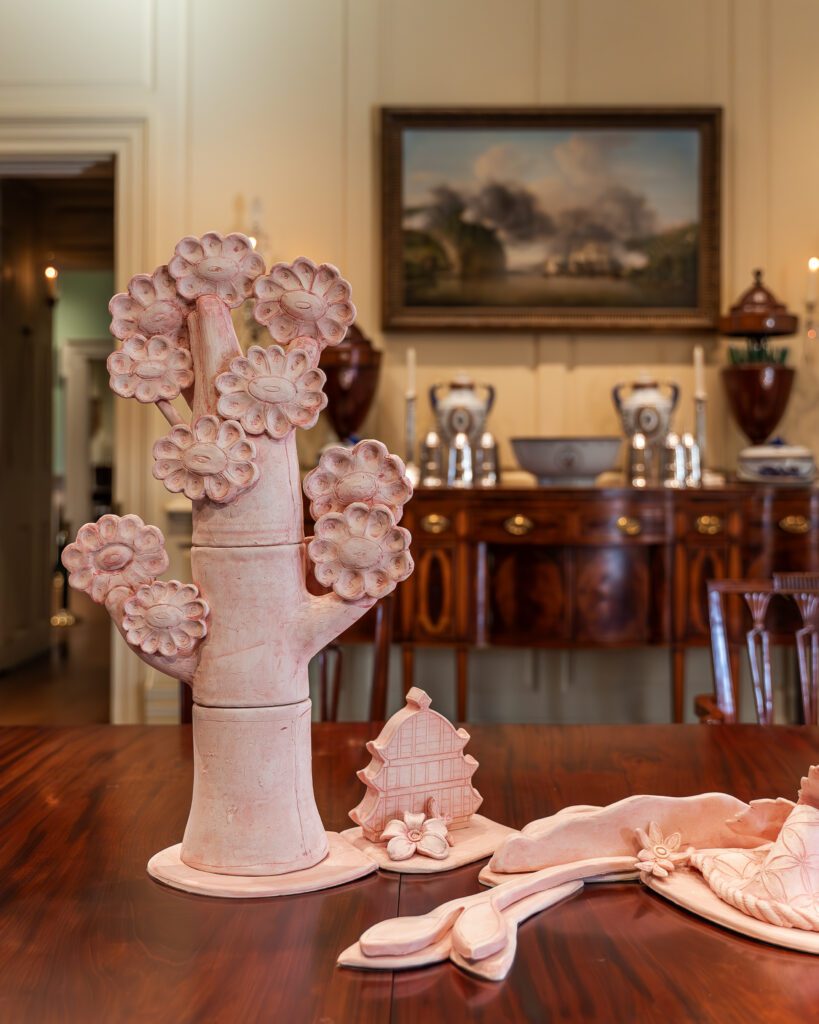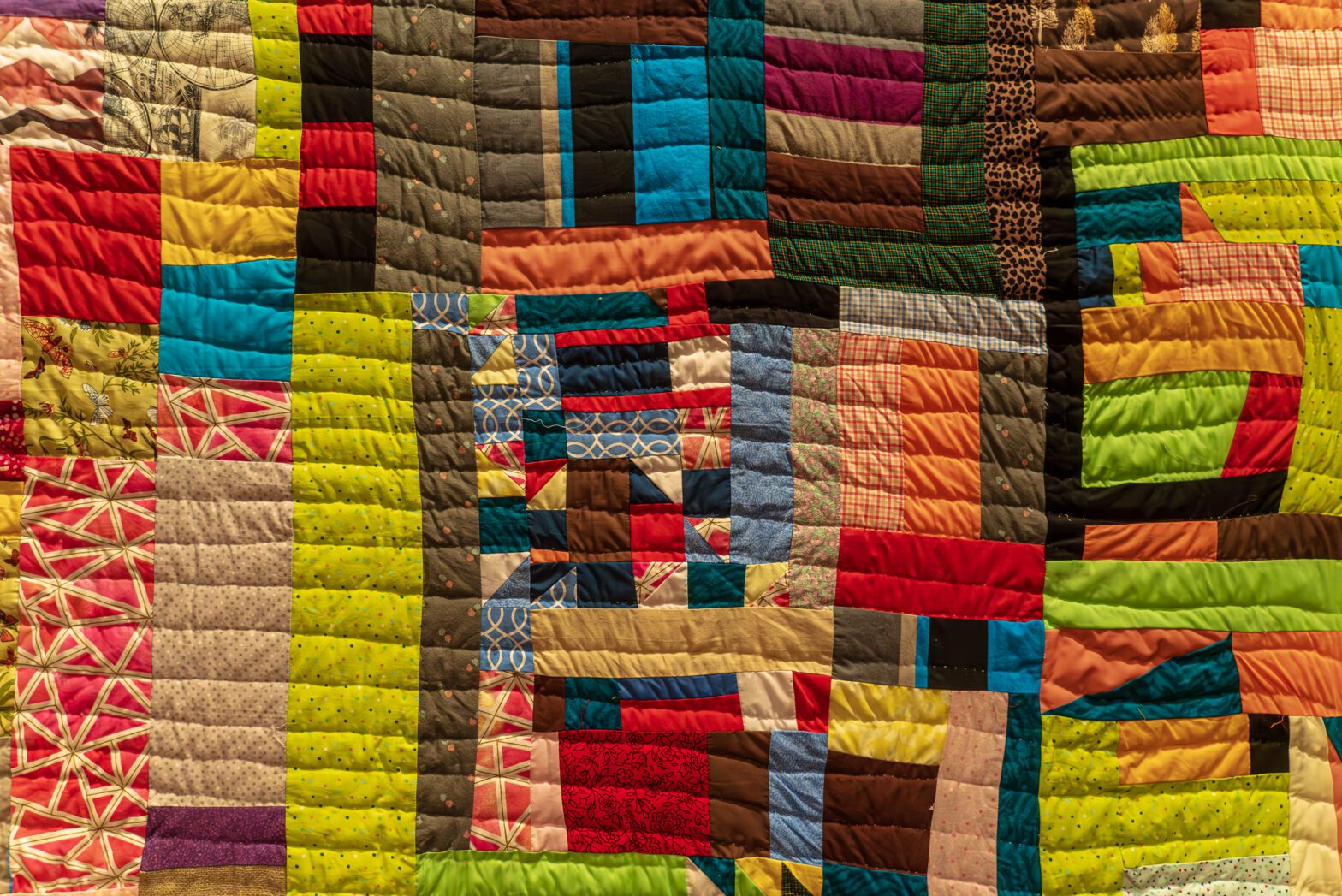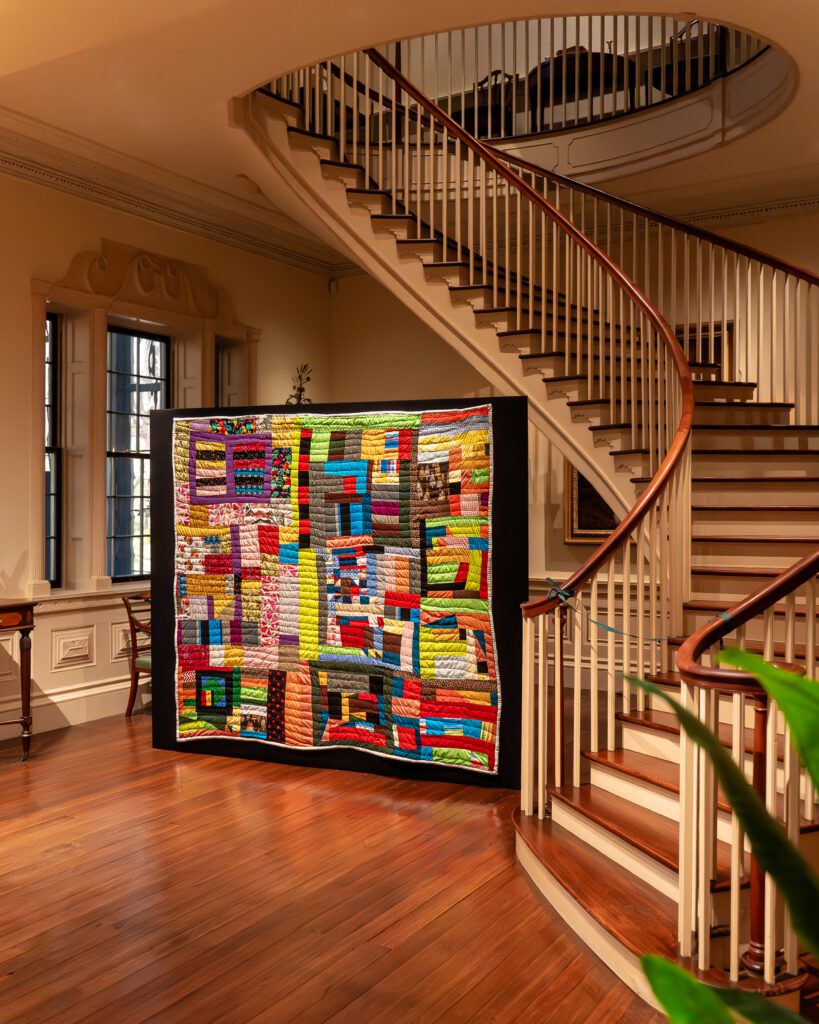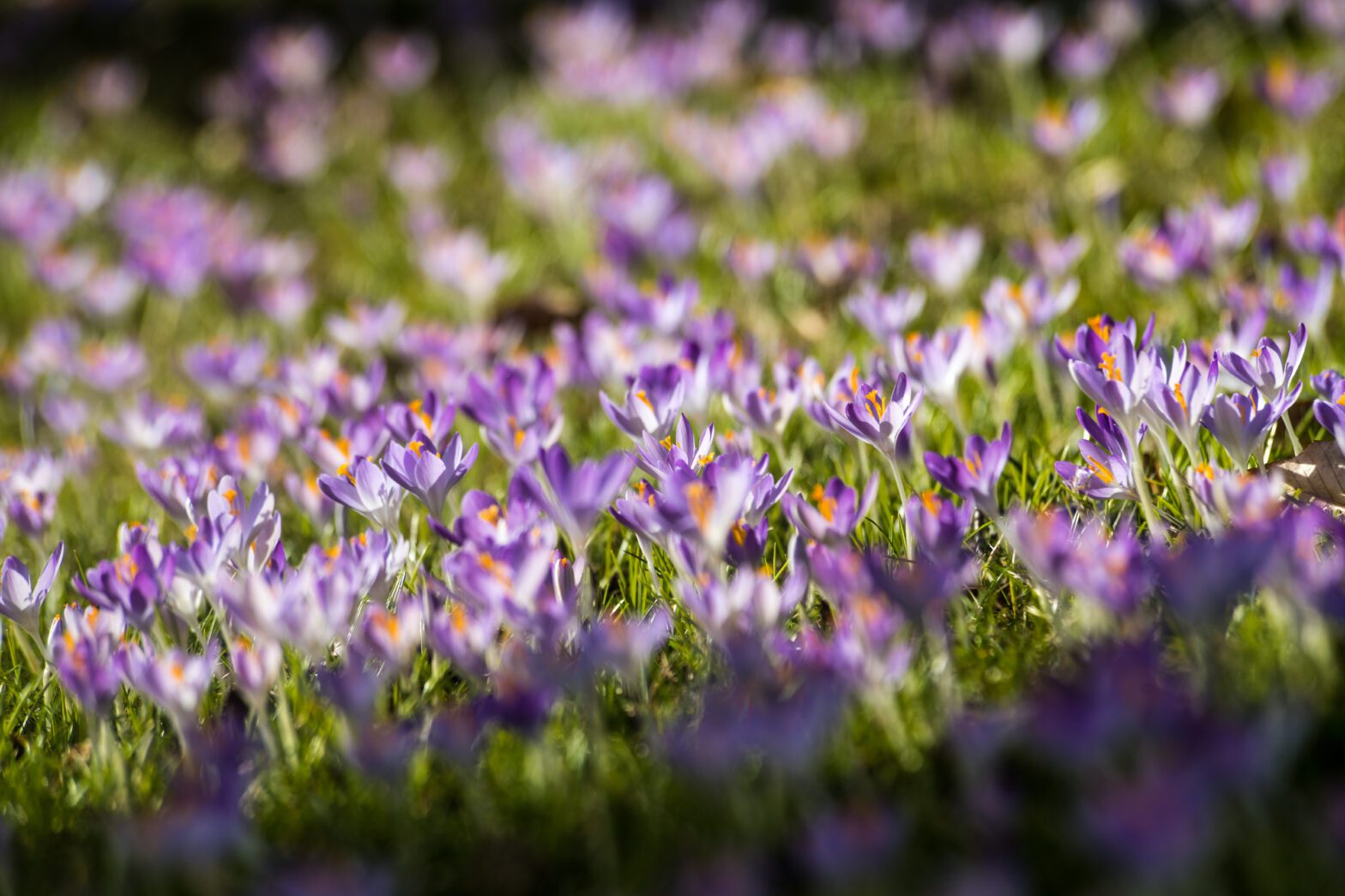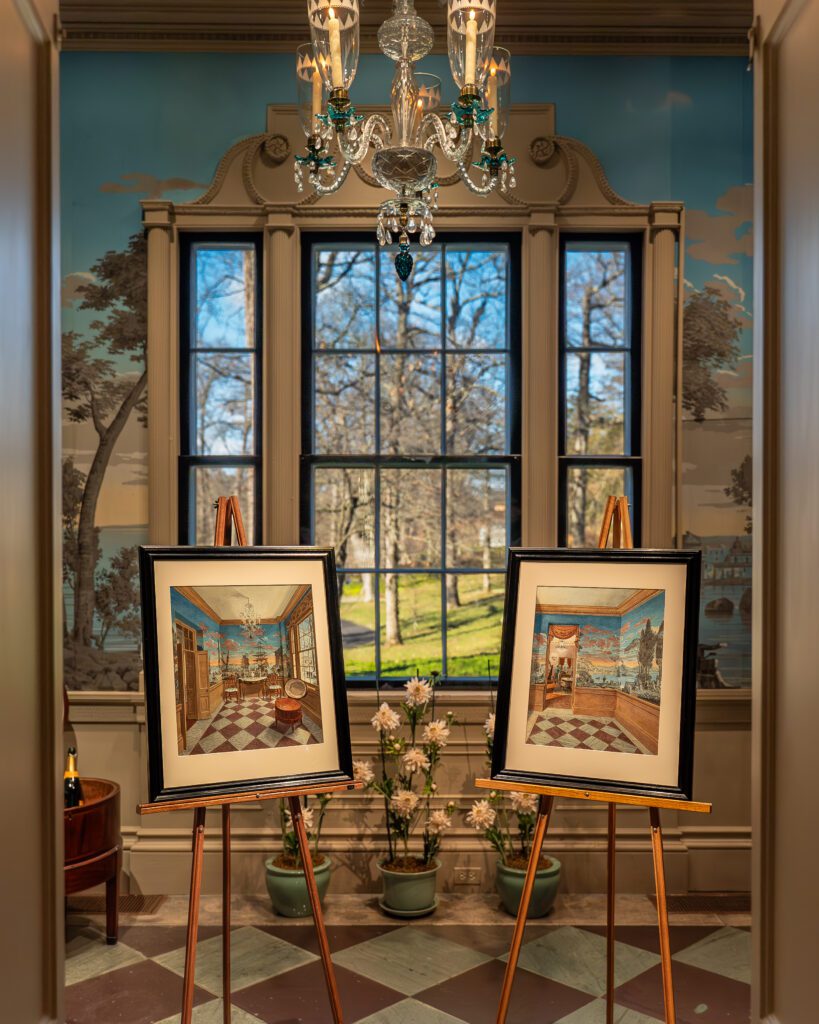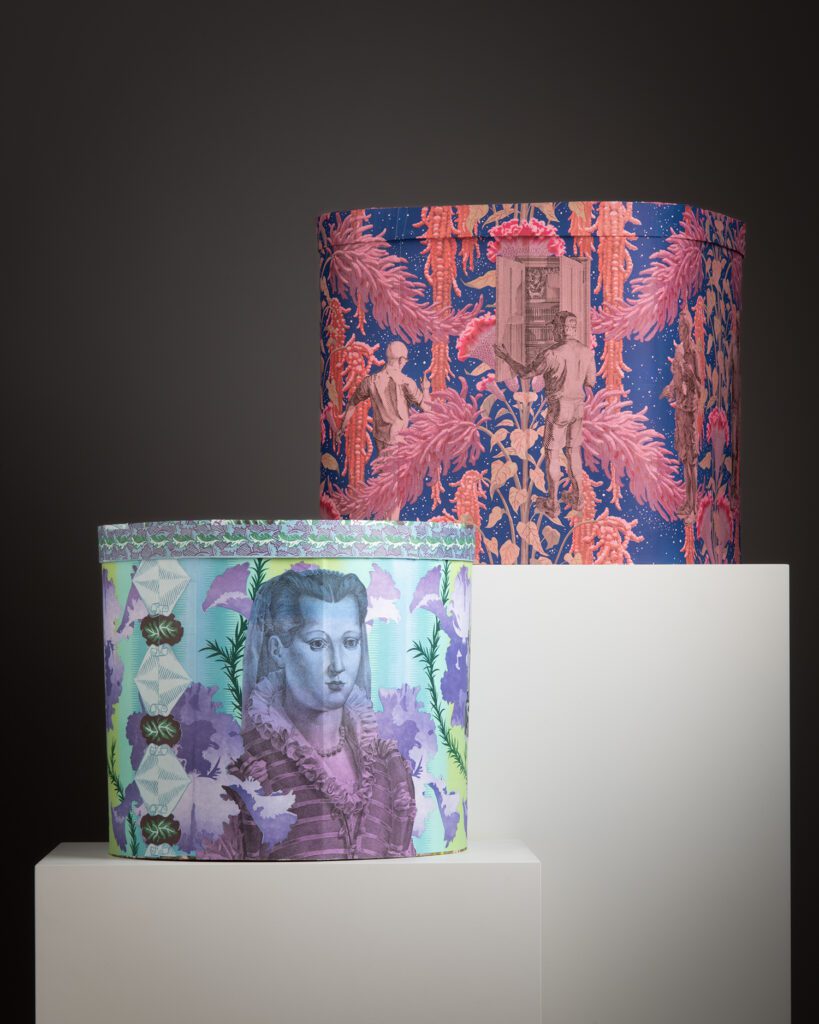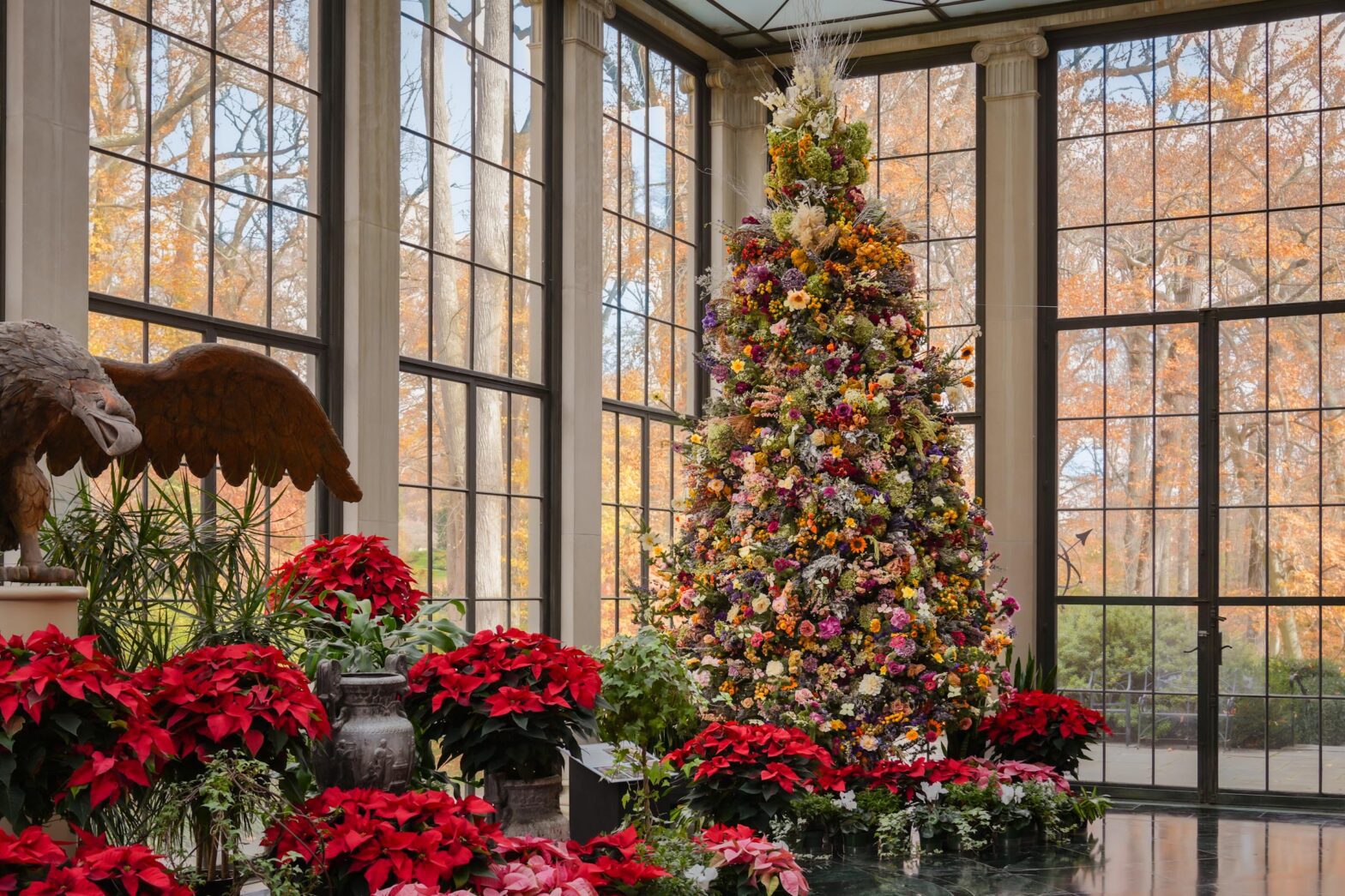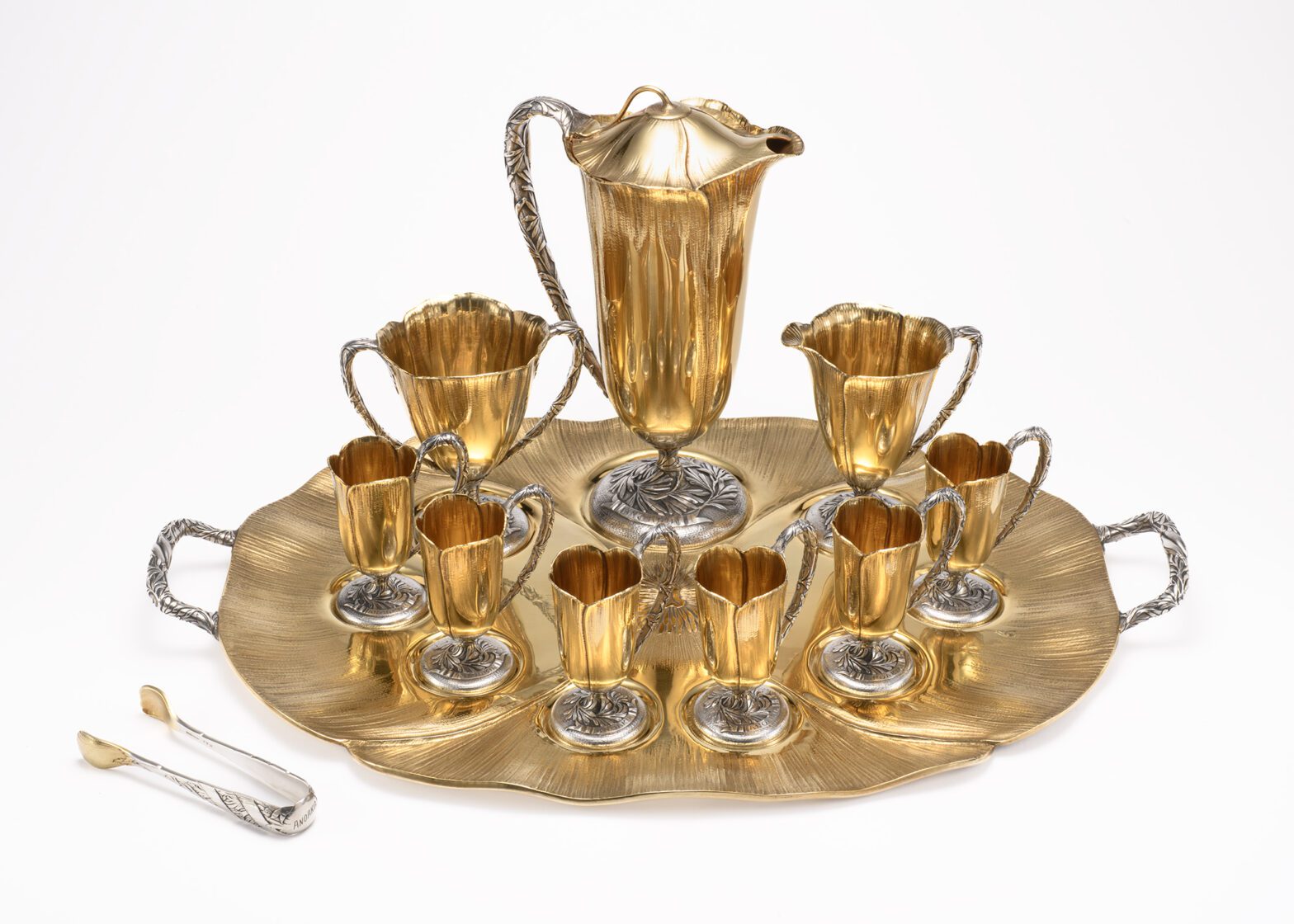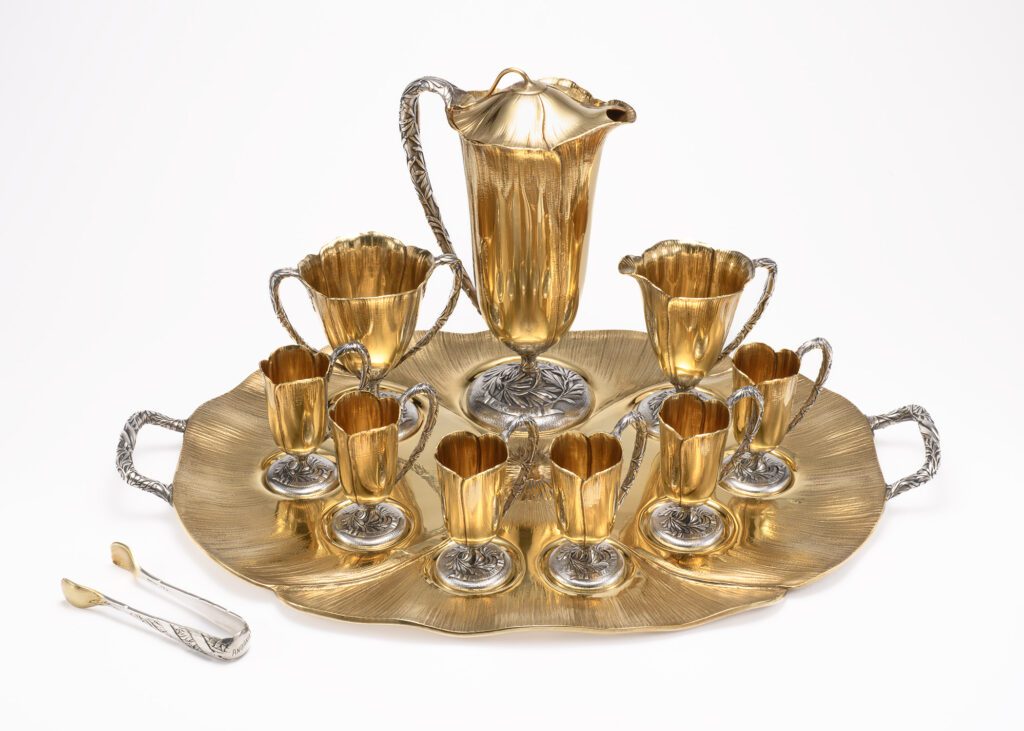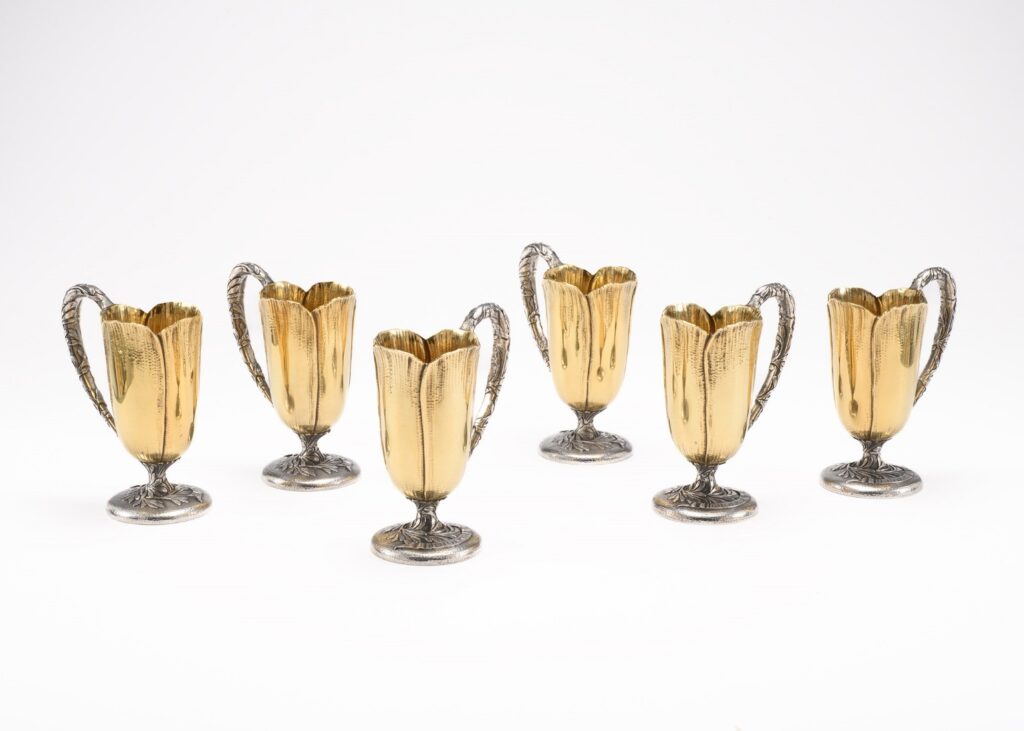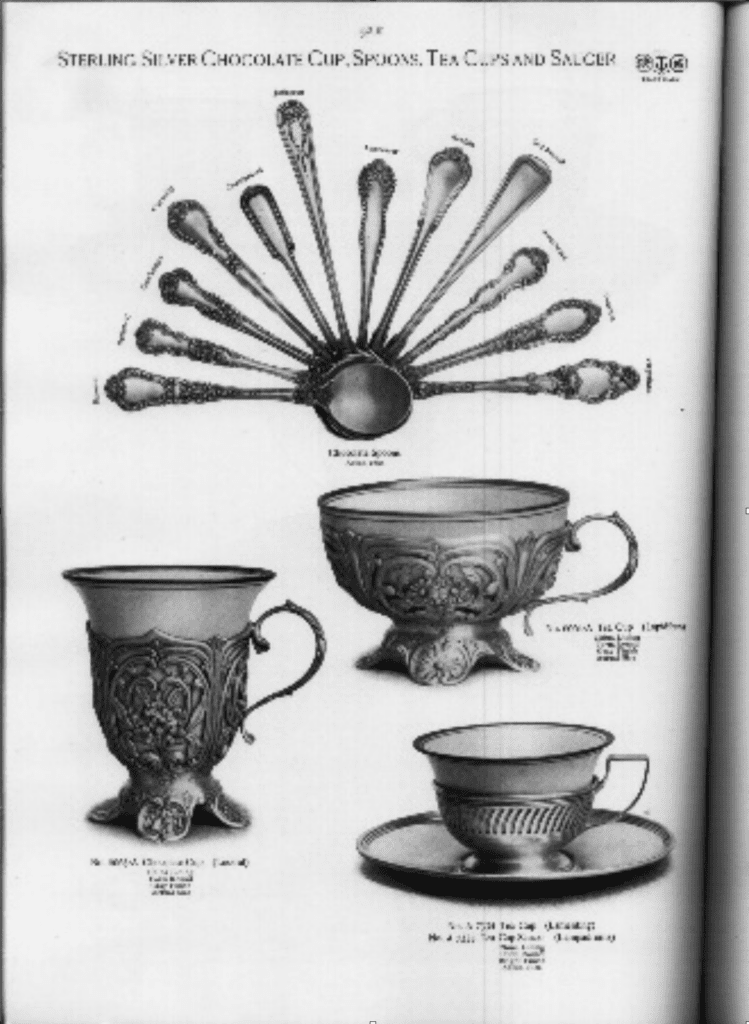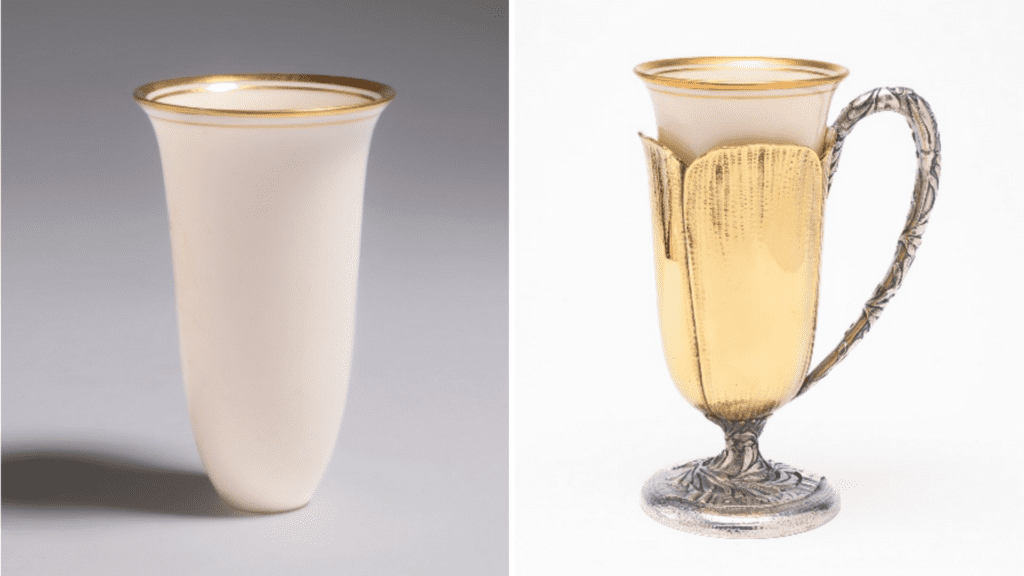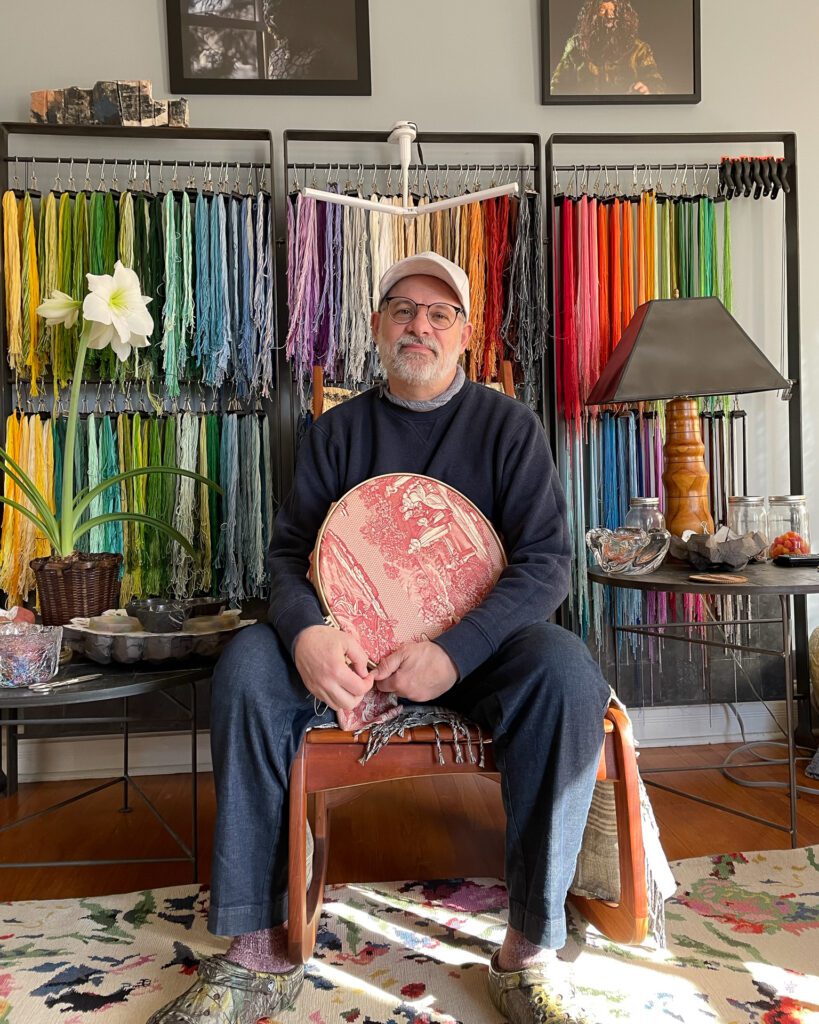
About the Artist
Richard Saja is an artist making work in Catskill, New York. After first attending the University of the Arts in Philadelphia to study surface design, he devoted his studies to the great books of Western Civilization at St Johns College in Santa Fe, NM and received a BA as a math and philosophy major. After a brief stint working as an art director on Madison Avenue, all his interests coalesced and a small design firm, Historically Inaccurate Decorative Arts, was born in the early aughts and gradually evolved into a fine art practice.
Though he occasionally feels the need to explore avenues of expression beyond that of the needle, the majority of Saja’s work focuses on creating interferences on the formal patterns of French toile through embroidery.
He has exhibited internationally with shows in London, New York, Paris, Berlin and South Korea and will have a solo exhibition at the Toile de Jouy Museum in Jouy en Josas, France in 2023.
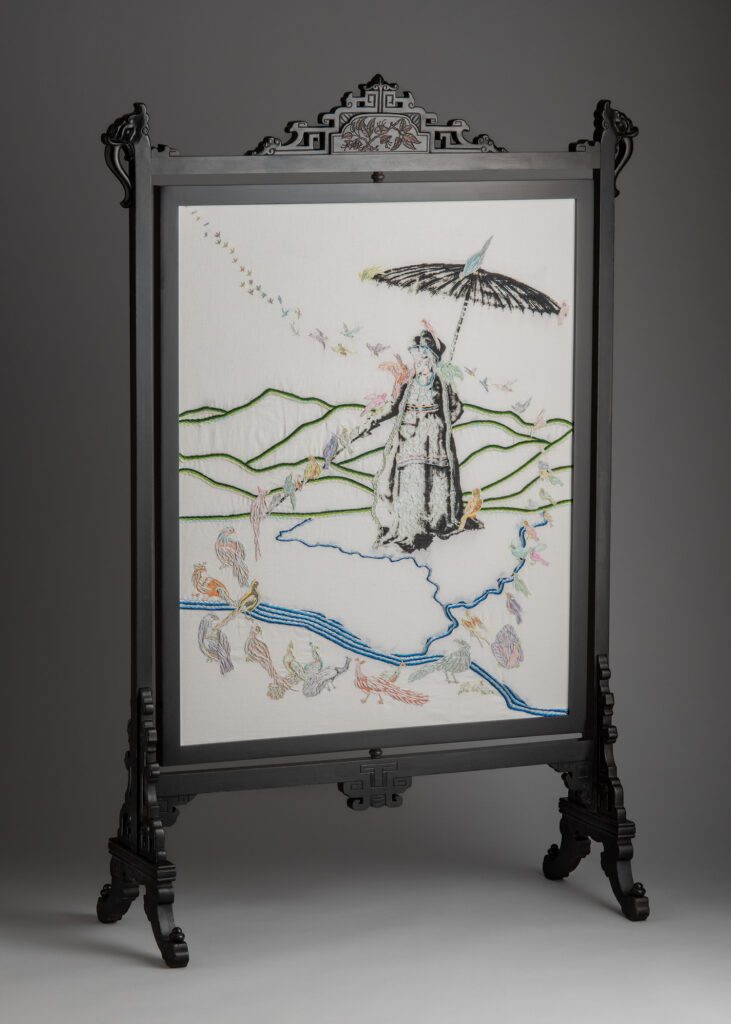
Evolving Utopia | Port Royal Parlor
Richard’s enduring love and fascination for textiles derives from the absolutely unlimited interplay of pattern, color and texture – there is no other medium where this trinity is so fully realized. He came up with the embellished toile concept while waking from sleep years ago. The original idea was to embroider Maori facial tattoos onto figures in the print but he soon discovered there were no toile prints available where that concept could be realized because of the relatively small scale of nearly all toile prints. He thus amended the concept slightly to include any and all embellishment. Historically, toile de Jouy is a print that through its dense repetition becomes anonymous. It’s a tabula rasa begging for context not unlike a child’s coloring book. The act of selectively embellishing small areas of it automatically inverts its historical usage: suddenly the anonymity of the print is broken and it evolves through its subversion which appeals greatly to Richard. With an economy of means, a whole new context is created. There is another story there, it just needs to be drawn out.
